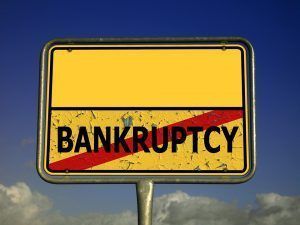How Do Retail Stores in Bankruptcy Conduct Liquidation of Assets?
 How many times have you seen a store advertising “Everything Must Go?” It’s becoming more and more common as brick and mortar retailers are being squeezed out by e-commerce companies that offer consumers the opportunity to shop 24 hours a day, with free shipping and easy returns, as well as the ability to comparison shop from the comfort of their couch. These flagging sales and other financial issues often lead to bankruptcy filings.
How many times have you seen a store advertising “Everything Must Go?” It’s becoming more and more common as brick and mortar retailers are being squeezed out by e-commerce companies that offer consumers the opportunity to shop 24 hours a day, with free shipping and easy returns, as well as the ability to comparison shop from the comfort of their couch. These flagging sales and other financial issues often lead to bankruptcy filings.
When a retail business files for bankruptcy, they can choose between a Chapter 11 filing and a Chapter 7 filing, with the former allowing the business to continue operating while reorganizing their debt repayment and the latter requiring the liquidation of assets. In a Chapter 7 bankruptcy, the liquidation of assets means more than just the sale of the goods on the shelves and racks: it means selling every asset that the company owns to raise money to repay its creditors.
A Chapter 7 bankruptcy filing and liquidation follows specific steps:
- The retailer is required to file a notice that it is going out of business
- The bankruptcy court will assign a trustee to oversee the liquidation of the company’s assets. This liquidation process generally consists of first holding “going out of business” sales, and then later auctioning off or selling additional assets such as fixtures and equipment used in both the retail function and the administrative function.
- The cash that is yielded by these sales is then used to repay the retailer’s debts to its creditors. There is a specific order in which creditors are paid, with tax obligations to the government being satisfied first, followed by secured creditors. Unsecured creditors paid afterward. This order often leads to vendors and customers who are owed money being left with a loss.
Though store liquidations may seem like hectic and disorganized events, studies have shown that when retailers take a deliberate approach to the process, they are able to increase their recovery, thus satisfying more of their creditors. Strategies such as providing higher markdowns at the beginning of the liquidation process have been shown to boost foot traffic, and that’s an important advantage in the face of the time constraints retailers dealing with liquidation often face.
If you own a retail business and you are considering filing for bankruptcy, having a strategic advocate on your side can provide a big benefit. Call us today to set up an appointment to discuss the options available to you.
The post How Do Retail Stores in Bankruptcy Conduct Liquidation of Assets? appeared first on Jensen Bagnato, P.C. | Attorneys At Law.
Unlock your legal success with a free consultation!
Call us now at (215) 546-4700 or click the link to request a Zoom meeting. Your future starts with the right advice today!

Law Office of Jensen Bagnato, P.C.
1500 Walnut St, Suite 1510, Philadelphia, PA 19102
Overview
Practice Areas
All Rights Reserved | Jensen Bagnato, P.C. | Disclaimer | Privacy Policy
